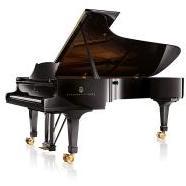
Aure_liano
Members-
Posts
13 -
Joined
-
Last visited
About Aure_liano

Profile Information
-
Gender
Male
-
Location
Hungary
-
Occupation
Student
-
Interests
Sport, Physics
-
Favorite Composers
Mozart, Schubert, Chopin, Ravel, Debussy, Bartók
-
Notation Software/Sequencers
Finale 2011
-
Instruments Played
Piano
Recent Profile Visitors
862 profile views
Aure_liano's Achievements
-
Anthony Johnson started following Aure_liano
-
Please, share the score too, if you could!
-
Thank you very much!
-
Great, I'm happy, I could help. In your place, I would use eights with tenuto, an in this case the differeces will be absolute clear.
-
Nice work! I really liked, how you mixed the tonal melody with chromatic bass. I noticed, you put staccato marks sometimes in the stuff of the tenor solo. Generally the composers try to avoid this notation, and mark the length in an other way. For example, in the 34th measure I would write eigths intead of quarters with staccato.
-
Thank you! Yes, it was quite hard to learn for them, but in the end they succeded really great.
-
I think you could catch the mood of a nocturne, well done! However, if you don"t mind I'd have a few suggestions: 1. measure: It would be better, if you group the accompaniment in 3+3. It wolud be more readable, and it'd express better your conception (6/8 for example?). It might be much better, if you would bigger distance between the low and high pitches in the counter. 2. measure: The two E tone (6th and 7th eights) broke the "fluency" in left hand, and in this genre, it is quite important (eg. you can change the first E to F). 3. measure: If you write only two part, you usually should avoid the unisonos, especially in that case (melody<->counter). 4. measure: It is markable, that you do not use a lot of third or sixth in your music. It could be your choice, but sometimes the piece sounds a bit "empty". 6. measure: I really like the special rhythm, it is a great idea. 10. measure: same as second measure. 11. measure: It is quite weird, that teh measure before the last one is not dominant (E minor, or E major). 12. measure: In my opinion, it is a bit annoying, when the nice melody break with the two C at the end. If I were you, I would change the bass a bit (eg. CEG-CH,E,), and the melody would be a half C, and a quater G, and then A(+the full chord, if you want: CEA). I have thought you might be able to understand me more, if you show my reflections in score, so I attached it (and an mp3). I hope it will be helpful!
-
This piece is one of my first composition for instruments. I think the instrumentation is quite unusual: 2 flutes, oboe, 2 trumpets, piano, cello. It is an early composition (I was 18, when I wrote that), but the chords and the melody have inspired me later, so this piece is quite important in my studies. What do you think about this piece? Please share me your thoughts. Thanks!
-
Help me for writing Nocturne and Waltz
Aure_liano replied to Muhammadreza's topic in Composers' Headquarters
Well, they are two very typical music style in romantic, so you can find a lot of excellent examples (besides Chopin: Tchaikovsky, Dvorak, Schubert). Waltz Yes, the time signature is always 3/4. Most of the time the first beat has the accent in the bass (first tone of the chord usually). Below, I atteched to typical bass-figuration, which are commonly used. The whole piece has usually ABA stucture, many times the return of A is perfect (there is no difference between the two As). The melody usually smooth to complete the bass's repetitive rythm. Naturally, the "one chord per measure" is not a rule, the most beautiful waltz pieces are harmonized quite complex, but if you like to compose waltz, you'd better start with this "limit". I hope, it will be helpful. -
It is my first composition for choir, it was composed in 2016, as an "illustration" for a music theory dissertation. In the piece I used a special self-developed tone-organization stucture, which is based on quart. This composing system is quite important in my progression as a composer. The poem was written by Endre Ady, who was a hungarian poet in early 20th century. The piece is performed by Allegro Barbaro Chamber Choir in Budapest in the May of 2017. I am curious, what you think about the composition, so enjoy it, and share with me your experiences. Thanks! Ps.: Sorry, I forgot the score, but it's been attached now.
-
[STRING QUARTET] Variations on a Dutch folk song
Aure_liano replied to Maarten Bauer's topic in Collaborative Works
Here it is. var_aure_liano.mid- 17 replies
-
[STRING QUARTET] Variations on a Dutch folk song
Aure_liano replied to Maarten Bauer's topic in Collaborative Works
A bit late, sorry. I hope you will like it.- 17 replies
-
Aure_liano started following Strength and Power
-
I do not know, how experienced you are in composing music to larger ensembles like this, but if you don't mind, I have a few suggestions. I like the themes, it is nice how they use penthatonic stuctures. If I were you, next time I would more concentrate to the chords, the harmony, because in the second part the repetitive harmonisation a bit annoying to me. For example in the Section E you use again the theme of D, but it would be much nicer in my opinion, if you change a bit in the harmony (fg. 58. m VI. -> IV.). About the score: 1) It is really great, to see the rehearsal signs, it makes easier to follow the score. 2) It would be much readable, if you write the Bass Cralinet in F-key (in case you do not want to work in transposing score) 3) If you write tremolo for stings, it is confusing to see slurs in the score (fg. 68-74 m.), avoid that. Well, I hope it is helpful, and I would be curious, if you will make any progress in this piece.



